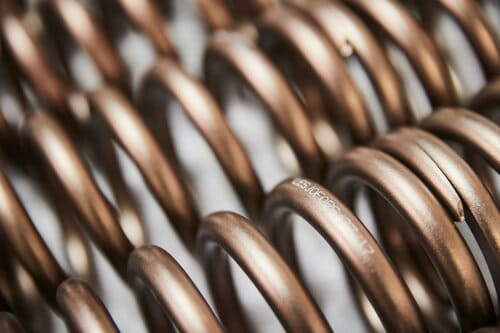
In this post, we will outline the definition of a coil spring, the different types and the basic mechanics of how they work. As market leaders, we are the experts in heavy-duty coil springs, designing, engineering and manufacturing millions of springs every year for every purpose.
So, let’s dive in and explore - what is a coil spring? And how do they work?
Coil springs are used to absorb shock, maintain force, support structures and facilitate controlled movement in various mechanical applications. They can be used in a wide range of systems, from automotive components to industrial machinery.
A coil spring is a mechanical device made from elastic materials, such as metal wire, coiled into a helical shape. This design enables the spring to compress, extend, or rotate under load and then return to its original shape once the load is removed. The properties of coil springs allow them to store energy temporarily and release it as needed, providing solutions for managing force and motion in mechanical systems.
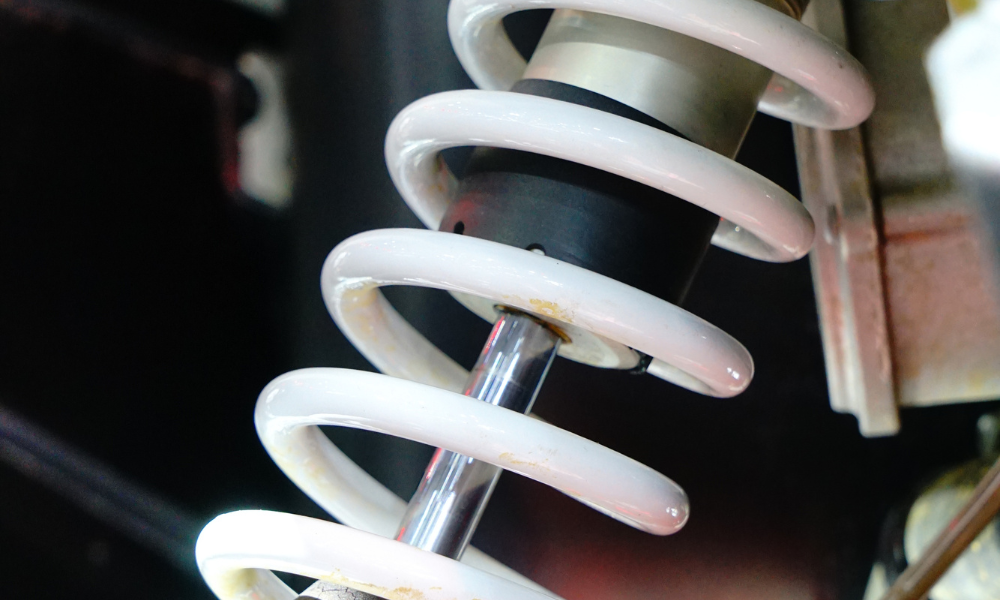
A coil spring functions by resisting force through compression or extension, absorbing energy when force is applied and then releasing that energy to return to its original shape. This mechanism allows it to manage shock, maintain force and facilitate controlled movements in various applications.
The three main types of coil springs include compression springs, tension springs and torsion springs; each has different advantages and functions.
Compression springs store and release energy when subjected to a compressive force. As the spring compresses, it stores energy within its structure. When the force is removed, energy is released, and the spring expands to its original length. In their original state, compression spring coils have space between them; they absorb shock and maintain force between components.
Compression spring applications include automotive suspension systems, industrial machinery and valve and actuator systems. Other uses include everyday household items such as pens, door locks, mattress springs and buttons in electronic devices.
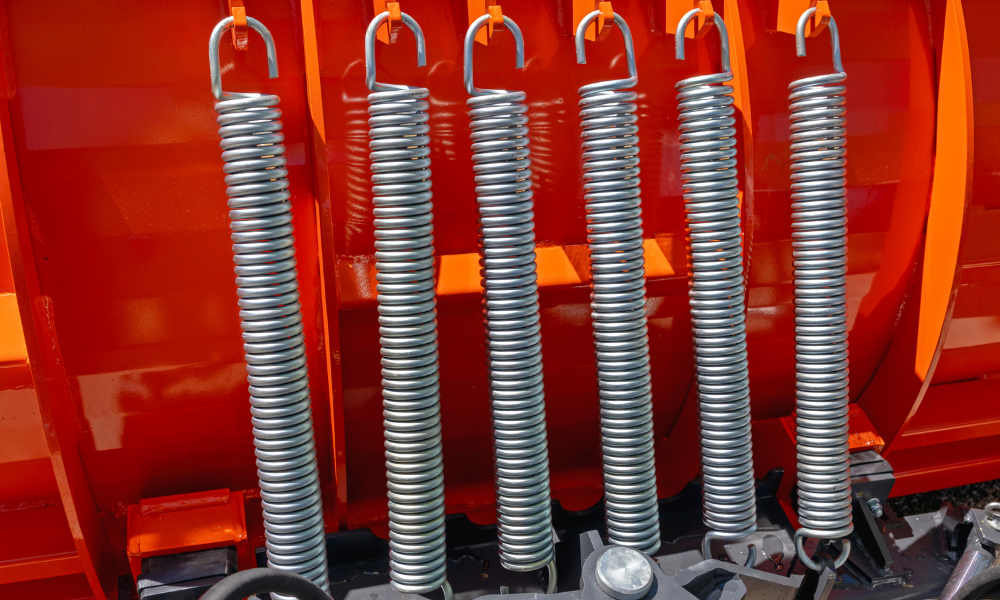
This type of spring, also known as an extension spring, works by resisting a pulling force. It absorbs and stores energy as it extends and then at a certain length, will create a return force and bring two components back to their original position. In their original, unloaded state, the adjacent coils will touch each other - however, the initial tension must be overcome before a tension spring extends.
Tension springs are used in a wide range of industries for products such as trampolines, retracting seat belts, garage doors, power tools, motorsport throttle linking systems, vibrating screens in mining, plus architectural designs.
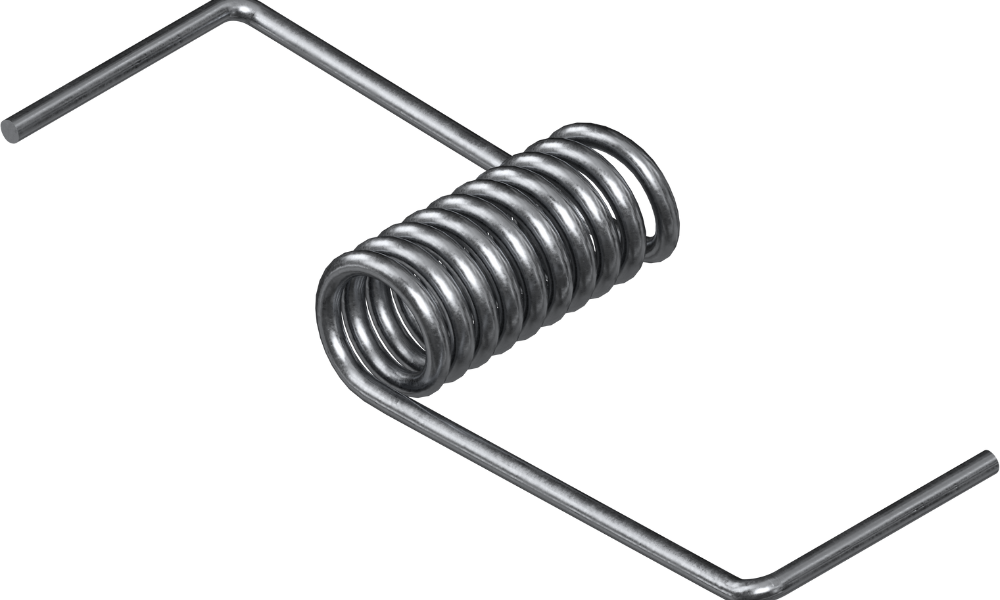
Torsion springs function by applying torque or rotational force. They activate when a force is applied to their arms, twisting the spring. The energy stored during this twisting motion is released as the spring returns to its original position. They are ideal for applications requiring controlled, rotational movements.
Torsion springs are used in pegs for gripping clothes, garage door mechanisms for lifting and lowering the door, hinges to return doors to a closed position, mouse traps for the snapping mechanism, watches for the winding mechanism, and vehicle suspension systems for stabilising and controlling movement.
When designing coil springs for heavy-duty applications, it is important to consider factors that ensure durability, efficiency, and performance under extreme conditions. Applications demand springs that can withstand high stresses without failing, and so the choice of materials, as well as spring rate, is fundamental to product success.
Common materials used in the coil spring manufacture process include stainless steel, carbon steel, chrome silicon, chrome vanadium, Inconel, elgiloy, titanium, phosphor bronze and beryllium copper. Each material varies in its strength, elasticity, corrosion resistance, and fatigue life. For example, high-grade steel alloys are commonly used for their excellent tensile strength and durability. Whereas, materials like stainless steel are preferred for environments where corrosion is a concern. Nickel and galvanised steel coatings can then further enhance corrosion resistance.
The spring rate, or stiffness, indicates how a spring will perform under load. It is defined as the amount of load required to compress the spring by a unit of length. In heavy-duty applications, selecting a spring with the correct spring rate is essential to ensure that the spring can absorb the required forces without compromising its structural integrity or functionality. A higher spring rate indicates a stiffer spring, which is beneficial for applications involving heavy loads, but it must be balanced with the need for flexibility and shock absorption.
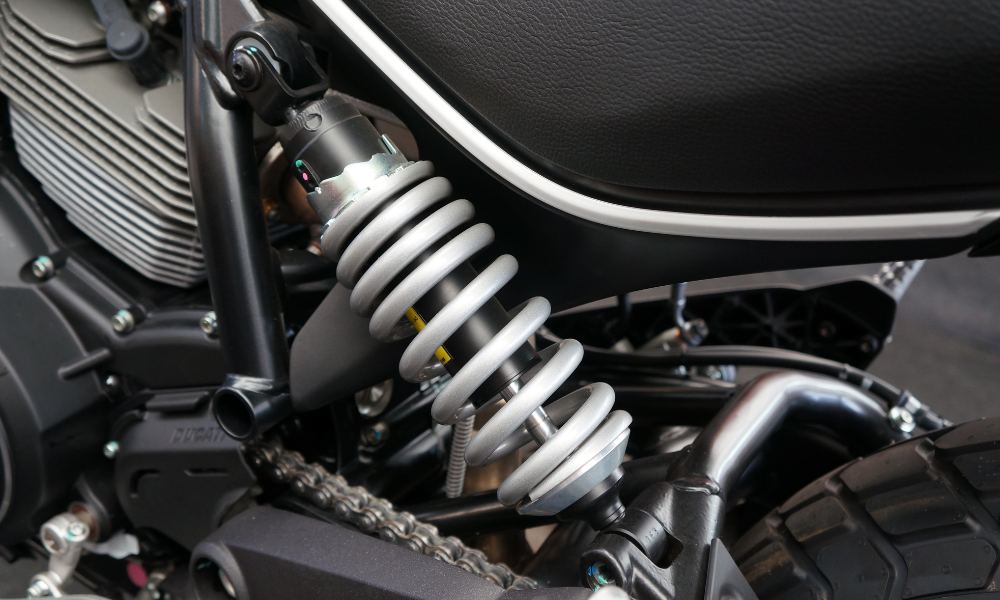
Coil springs are integral to heavy-duty machinery across various sectors, such as in the automotive, construction and agricultural industries. Let’s explore how they enhance performance, safety, and durability in these applications.
In the automotive industry, coil springs are used in car suspension systems to ensure vehicle stability, shock absorption, and comfort. They are designed to withstand the repetitiveness of daily use and harsh driving conditions across every vehicle type from domestic cars to heavy-duty trucks, buses, and off-road vehicles. Other uses include seat mechanisms, clutch assemblies, brake systems, engine valves and vibration dampening to reduce noise inside the vehicle.
Construction equipment relies on coil springs for vibration control and operational efficiency. They are used in machinery such as bulldozers, excavators, and cranes to absorb shocks, maintain equipment alignment, and reduce wear and tear, ensuring reliability and safety on construction sites. Other common types of uses include concrete mixers, truck tailgates and vibrating screens and feeders.

Agricultural machinery, including tractors, combines, and ploughs, use coil springs to manage the uneven terrain and heavy loads. They maintain stability, improve ride quality, and extend the lifespan of machinery in demanding environments. Other uses include tractor seats, baler machinery, and sprayer arms for crops.
Compression springs, tension springs and torsion springs can be custom-made and manufactured to your specific needs. Our advanced hot and cold coiling technologies and manufacturing capabilities enable us to coil springs from 3mm to 65mm wire diameter. Plus, our prototyping and sample services enable you to test your product before it goes into production.
Here is a quick overview of the process of designing a custom spring.
Our free consultation explores the application of your spring. We find solutions to questions such as ‘What is its failure mode?’ and ‘Are you looking to improve an existing design, or does it need to be lighter, stronger and more corrosion resistant?’
We explore limiting factors and evaluate the final dimensions, then create a suitable production drawing that meets all of your requirements.
We carry out material research, considering factors such as tensile strength, durability, efficiency and corrosion resistance, to find the best material for you.
Our spring technicians then develop a new coil spring design using the most advanced spring software programme - Optispring. Plus, we book a feedback session with you to evaluate the success of the design.
We deliver manufactured metal spring samples so that you can test them in real-world applications. This guarantees that you are happy with the spring and that it is reaching optimal performance before going into production.
Our quality team will then review various aspects of the process, including the initial drawings, testing procedures, powder coatings, and print markings, and then carry out the Almen Arc test. These steps ensure you are satisfied with every step of the approval process - and then production begins!
Coil springs are essential components in various mechanical applications in a wide range of industries. The three main types of coil springs are compression springs, tension springs and torsion springs - each works by resisting compression, extension or torsion forces. However, the main functions of all types of coil springs include shock absorption, maintaining force, supporting structures and facilitating controlled movement. It is important that materials and spring rates are considered for each type of coil spring during the design and manufacture process.
Do you need guidance to select the best material for your custom spring?
At Lesjöfors, we work with a large range of materials and hold the largest global stocks of chrome silicon and chrome vanadium anywhere in the world. We can also optimise your spring performance with top-quality materials such as steel, copper and titanium alloys and super alloys, such as Inconel, Hastelloy and Nimonic.
Get in touch with our expert team to receive expert guidance and find out how to order a custom spring.
We are world-leading heavy duty spring manufacturers, delivering the greatest expertise in compression, torsion and tension spring manufacturing.
Delivering impact to every industry, we guarantee spring solutions that will optimise your performance and success.

